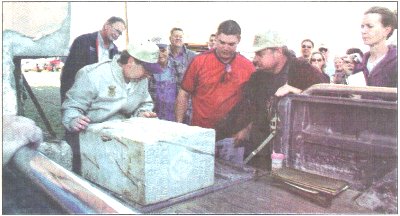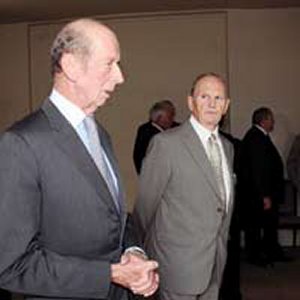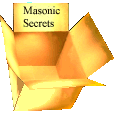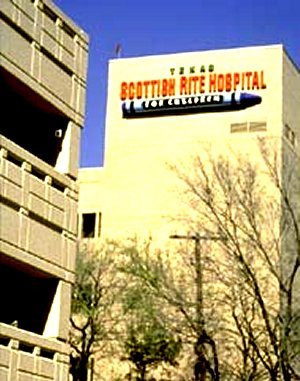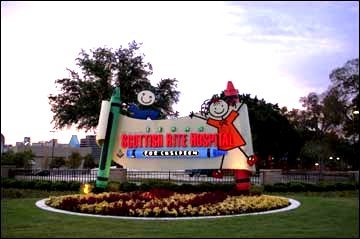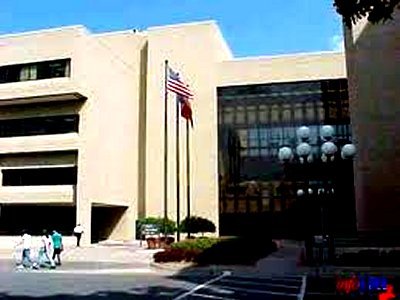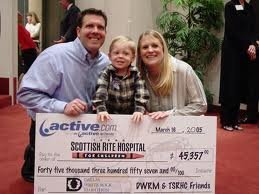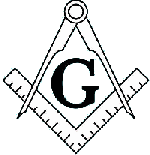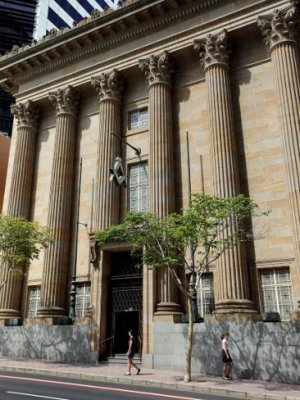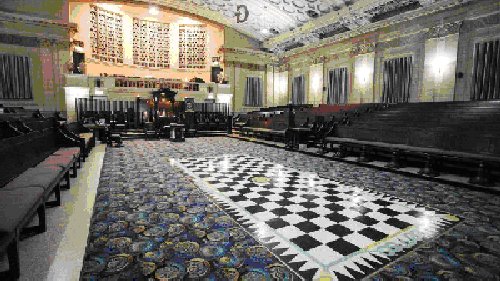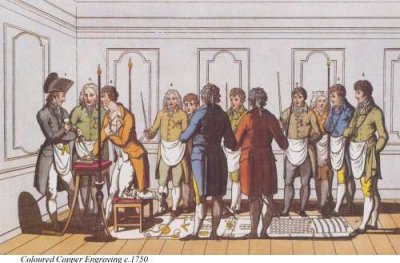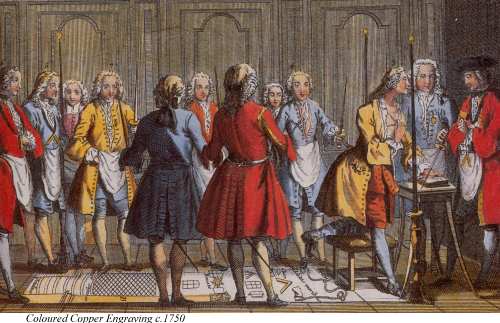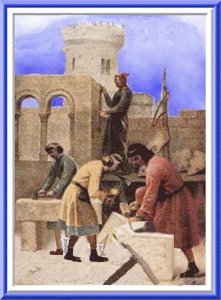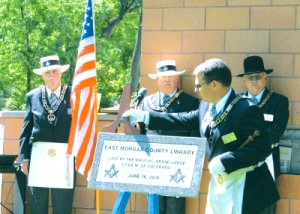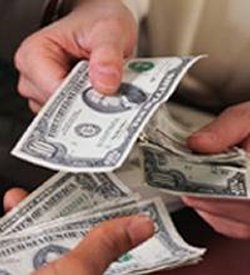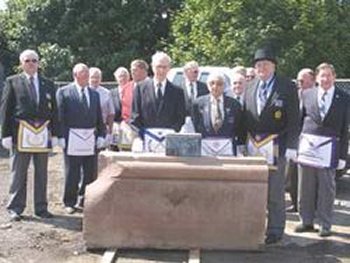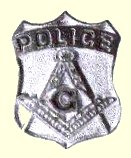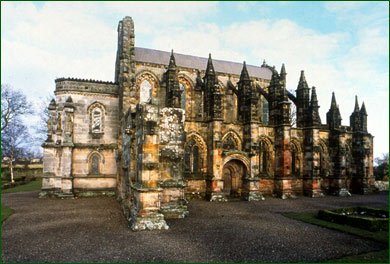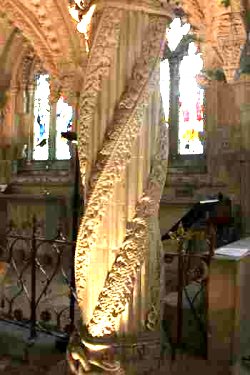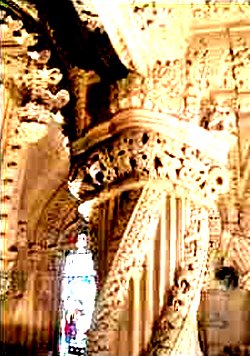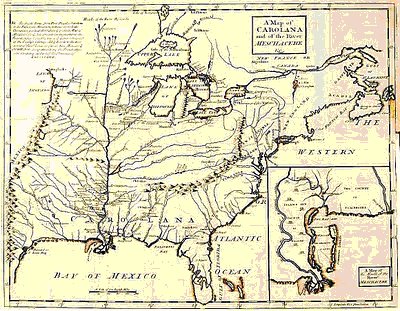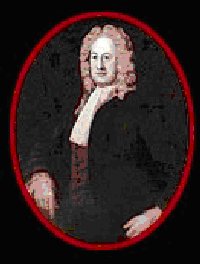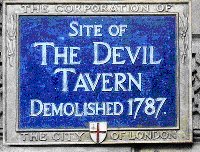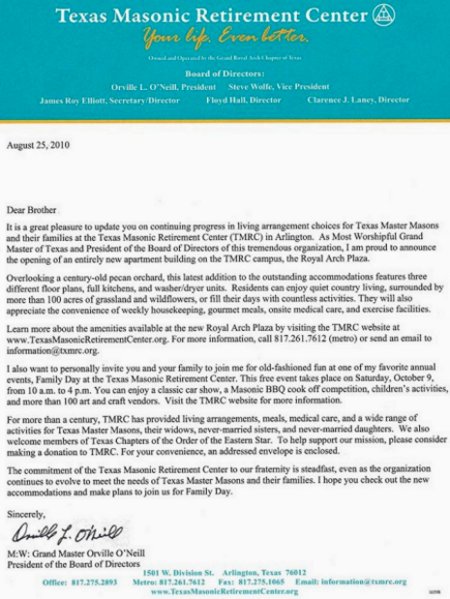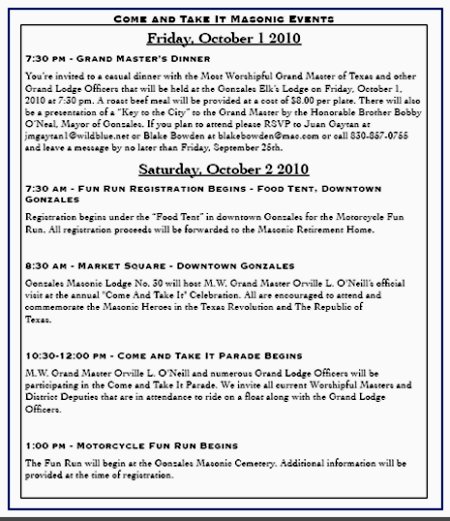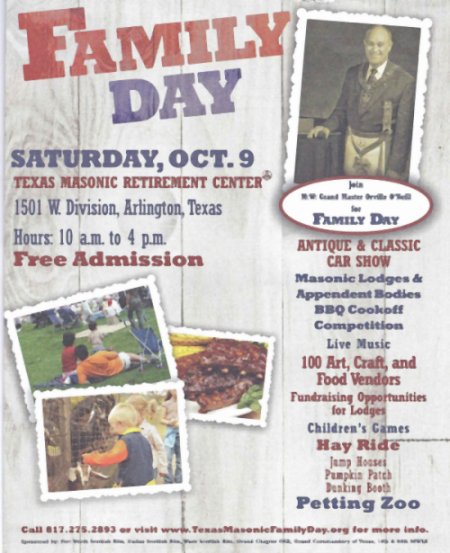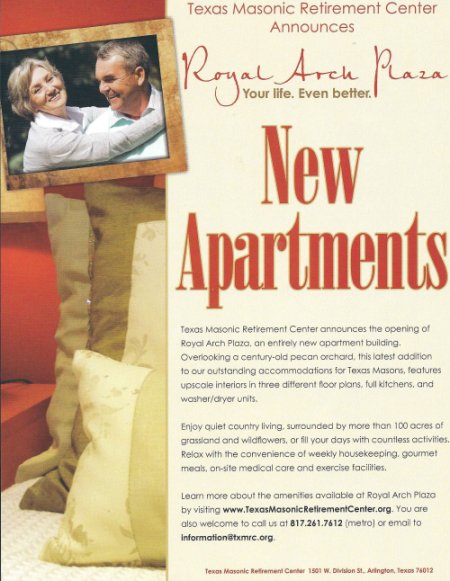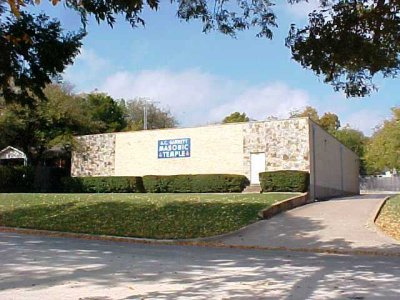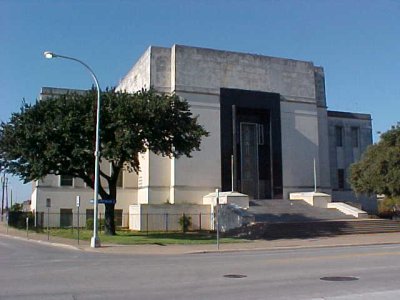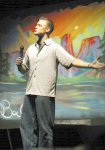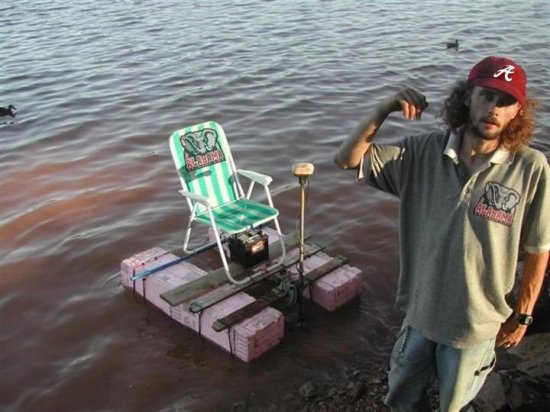
|
October 2010

Myra Lodge Number 878 A. F. & A. M.
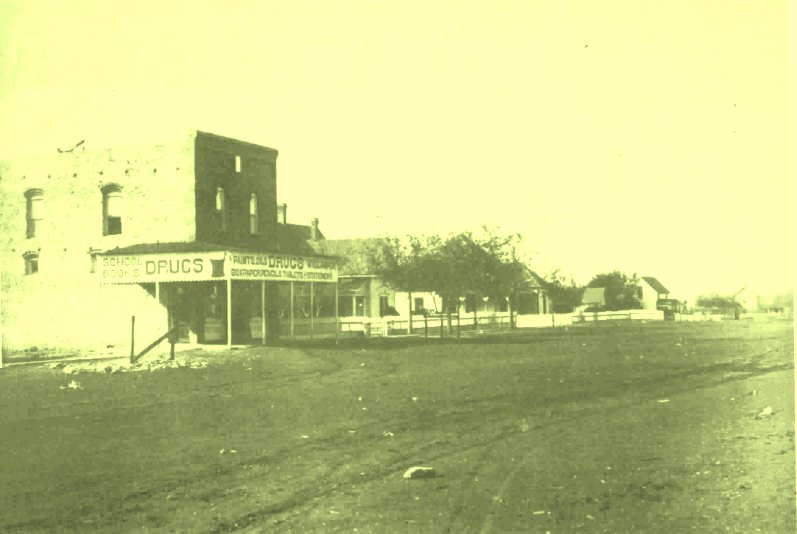 Myra Lodge Number 878 A. F. & A. M. Over The Store In 1900 |
|
Page III |
"The Littlest Lodge with the Biggest Heart"!
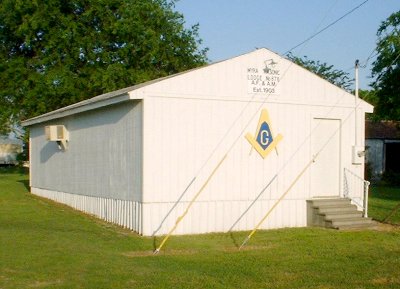 Myra Lodge #878 AF & AM
The initial meeting of the Myra Lodge 878, Myra, Texas operating under Special Dispensation of the Grand Lodge of Texas held September 19, 1903.
Present were: Tiler - District Deputy Grand Master L. Gregory set the Lodge to Labor. There were 22 Charter Members. Trustees were appointed and various committees were appointed. The Lodge Building was located at the S. W. corner of FM1198 and Bradford street. November 21, 1903 it was requested that the Grand Lodge of Texas Grant the Lodge a Charter to work under the Grand Lodge of Texas. The Grand Lodge of Texas granted the Charter Dec. 3, 1903. Myra Lodge 878 was originally a Moon Lodge of Texas, so called because it scheduled its meeting nights on the Saturday of, or just prior to the night of the Full moon so the members would have the light of the moon to travel home by. The By-Laws of the lodge were approved the meeting of Saturday, February 5, 1904. They were again read June 4, 1904 and adopted at the meeting of July 1904. December 1984, Dr. Hal Maxwell, Jr. Notified the Lodge by letter asking the Lodge to move from his building. May 6, 1985, Dr. Maxwell requested the lodge to move from his building by May 18, 1985. May 4, 1985, Fish Creek Lodge at Marysville voted approval for Myra Lodge the use of their Lodge Building. After approval from Grand Lodge, Myra Lodge met there until April 6, 1987. October 6, 1986, Myra Lodge voted to build a building on land donated for that purpose by Brother C. L. Williams. April 6, 1987, Myra Lodge moved to its present location 1660 FM 1198 Myra, Texas. In 1997 the Myra Lodge was considering closing the lodge. The request to demise was sent to the Grand Master. He would not allow the lodge to demise and would move the charter to a new lodge. The lodge began to grow in membership and receive a commendation letter from the Grand Master in 2001. The lodge building was completely remodeled in 2002. In 2004 we have 25 Members and 11 Endowed Members. We sponsor an annual Easter Egg Hunt for the community. Our motto is "The Littlest Lodge with the Biggest Heart"! The Community Towards the end of the nineteenth century, much of Cooke County was unsettled. Cattle were driven north through the open ranges, and occasional Indian raids added to the difficulties of pioneers scattered through the area. But, in 1887, as Western Railway Company extended its line west from Gainesville to Henrietta, civilization began spreading. Twelve miles west of Gainesville stock pens were built, and it wasn't long before buildings began to pop up. These clusters of buildings grew around the railroad and became known as Myra, named after the railway superintendent's daughter. Cooke County's first test oil well was drilled in 1898 near Myra on land owned by George Ball. The news over this oil discovery caused great excitement, and the rush to Myra was on. 1900 was the boom year. Many homes were brought in from other areas and lots were selling south of the Katy Railroad tracks. The first bank was established in 1904 and the Methodist Church received its own building about this time. After a big cotton crop in 1907, the town's first cotton gin was erected. Community fairs were held in Myra in 1912 and 1915; but by 1915, the population of the town had already declined to 474 citizens. An electric light plant was installed in 1919. Two years later, a branch of Cooke County Library opened with Dr. Maxwell in charge. Myra businesses in operation during the 1920's included a livery stable, cafe, hotel, barber shop, hardware store, blacksmith shop, and several general stores. But things continued to slow down in the town during the Great Depression, and the construction of Highway 5 (later Highway 82) north of Myra further led to the town's decline by somewhat isolating it from the major thoroughfare. Most of the businesses dwindled and eventually went out of business. Tragedy struck Myra the night of April 12, 1945, when a tornado hit the town. One person was killed, three were seriously injured and both the Methodist and Baptist Churches were destroyed. The pride and hard work of Myra residents eventually paid off when the town won the statewide, prestigious Community Development Award in 1979. One big boost that year was the founding of the Myra Volunteer Fire Department Barbecue, a community event which draws crowds and raises funds for the department. It is a community that has endured for over 100 years and continues to be a warm, friendly place to live in and visit.
|
|
Page IV | ||
Continued From Page III The Cornerstone By Janie Hartman
Steven Muller, Lodge secretary, presided over the event, reading the actual minutes written in 1912 by Henry Jones, Mason secretary. Spectators were invited to "take a whack" at the building that surrounded the stone. Those spectators included members of the Myra Community, ex-students of the school, and special guests. Once the stone was pried loose, a galvanized steel box was discovered, and the stories Nell Powell were told by her grandmother, Mrs. Henry Jones, were true, a time capsule was placed in the cornerstone 96 years ago. Muller pulled out items, but because most were paper and the wind was strong, the items were brought into the building and viewed by those present. Items included a 1912 list of students and faculty, list of memijers of the Myra Baptist and Methodist churches, April 1912 editions of The Weekly Hesperian, The Gainesville Signal, and the Bi-Weekly Register, all Gainesville newspapers. Also, a small Watkin's talcum Powder in & tin container, an 1884 Indian head penny, the original school building specifications, and Masonic items. On a fragile piece of linen were written the Myra Masonic charter members from 1903 and the "current" 1812 members, Also Masonic symbols, the square, a level and plum, treasurer emblem (crossed keys), the senior deacon sun and junior deacon half-moon, and the working tools - a trowel and compost. Each of the 1912 newspapers carried articles on the stone to be laid. One article noted "Just a few years ago that section was an open prairie or pastures, but by the thrift and enterprise of some of her citizens, they now have a thriving little village and it is still moving forward." Muller stated that the cornerstone went unnoticed for many years until it was rediscovered about five years ago. The Masons were going to wait until 2012 to remove the stone, but plans to raze the building for a new fire department moved the date. One side of the cornerstone reads Myra Public School, April 1912. It listed the architect and contractor and the Board of Trustees - B.C. Compton, pres.; C.L. Maxwell, sec.; H.R. Jones; F.L. Aldridge; J.T. Biffle; Win. Bryant; and Brown, On the east side, the stone had the Masonic Square and Compass - the emblems of a Mason, Myra Lodge, No, 878.AF & AM; C.B. Jones WM; JC Bety SW, and HA Patterson JW, (WM stands for Worship Master, SW - Senior Warden, and JW - Junior Warden). The Myra Masons plan to make a monument and place the stone in front of the Myra Lodge Building. The items in the time capsule were turned over to the Myra Community Club for sale keeping. Masonic members from Myra, Era, Gainesville, and Fish Creek Lodges were present at the ceremony along with District Deputy Grand Master Barmy Knight. Larry Muller is Master of the Myra Lodge. The first Myra school house was built in the summer of 1900 in the southwest part of town. A new brick school was built in 1912, located about 200 yards east of town. The school grounds covered about five acres. The two-story building cost $10,000 to build. It had five fully equipped classrooms and an auditorium with seating capacity of about 400 on the second floor. Sanitary drinking fountains, convenient cloakrooms, good blackboards, and the Pease System of sanitary chemical toilets were installed. A good cement sidewalk of over a mile connected the school with the depot, town, and churches. The playground was well equipped. There were three basketball courts, a baseball diamond, tennis court, race track, pole vault and jumping grounds, and a volleyball court. At one point, the two-story classrooms were made into a gymnasium, and classrooms were added to the west side of the old school The Myra School dosed in 1966, and later, the students were divided between Muenster, Lindsay, and Era ISDs.
| ||
|
From The Buckinghamshire Advertiser Beaconsfield, Bucks, UK 31 August 2010
Freemasons have won the royal seal of approval for encouraging youngsters to do community work in the area. The Duke of Kent paid tribute to 28 groups at the Masonic Centre in Windsor End, Beaconsfield, who had encouraged teenagers to care for others in the ihelp project. The scheme provides around £14,000 in prize money for youths who give up their time to help others. The Duke, who is the head of Freemasonry in England Wales, met Buckinghamshire Freemasons during a private visit to Stoke Place, Stoke Poges, where he was briefed on how initiatives are giving the order a higher profile in the community. He said: "I have been very impressed by all that you do. It is important to channel the energies of young people into helping others. And it is vital to explain freemasonry's ideals of friendship, decency and charity to a wider community.
"The ihelp project is clearly achieving all those objectives. I congratulate you all." He also praised a group of Masonic cyclists who raise more than £50,000 for good causes in a marathon trek from Gibraltar to Bucks.
|
|
Page V | ||
SAM HOUSTON
Soldier, Freemason, Congressman, Indian Trader, General, Hero, President and Senator
"He died after an illness of five weeks. At one time during his sickness, hopes were entertained of his recovery, but his improvement was only apparent and it soon became evident that the band of death was upon him. To his numerous friends it will doubtless be a matter of great satisfaction to care that in his last hours he was sustained by the Christian's hope and that he died the death of the righteous." Thus has passed away one of the great men of the age. Say what we may of General Houston, we can but accord to him the merit of having filled his full share of the history of the last forty years. His life has been a remarkable one. Whether as Governor of Tennessee, when he was but a little over thirty years of age, or as chief of the Cherokees, or as a hero of the Texas revolution, or still later in the political arena of these last past years, he has always occupied a high place in the public consideration. He has not always been right, nor has he always successful, but he has always left the impress of his mind upon the times in which he has acted. What were the springs of action to his mind, who dare undertake to tell? What drove him when he was on the high road to fame, and the enjoyment of life, the governor of a great State, the idol of a great people, to cast himself loose from them all and plunge into the wilderness of the West, and become the companion of savages? What led him afterwards, restated in the paths of civilization, honored Senator of another great State, and the beloved idol of its people, to again cast himself loose from their convictions of right, and in defiance of their feelings yield his assent to the designs of their enemies? Who can tell? What ever it was, the ease with which he regained of his fellow citizens, in both these instances, are among the most remarkable incidents in history. After being lost for years in the wilderness, he re-visited Tennessee, and was received with the most flattering attentions by the whole people. He entered Texas, and was made little less than dictator. After being repudiated by the people of Texas twenty years later, denied his seat in the Senate, cast off by many who had always before voted for him, he took the field against a powerful and well organized party, and again the people flocked to his support and made him Governor. Such power over men is unquestionably the most remarkable trait of his character. There in lay the greatness of Sam Houston. It was not in his virtue, for in the course of his life he has passed through what would have been degradation to other men; and from the couch of the debauchee he has risen to the throne of power, his faculties unimpaired and his authority unquestioned. It was not in his generosity of heart, for a man who is slow to forgive as was General Houston, is not a natural lover of his kind. But it was in the certain power of discovering the springs of human action, a knowledge of human nature, and an ability to use his knowledge which few men possess. To write a history of the life of Sam Houston is not our part. His history is too well know to make it necessary. To picture his character is also a task that may well be left to the public at large, to whom he is as well know as to us. We pity the heart that could now conceive evil of him. His noble qualities are before the people. Let us shed tears to his memory, due to one who has filled so much of our affections. Let the whole people bury with him whatever of unkindness they had for him. Let his monument be in the hearts of those who people the land, to which his latter years were devoted. Let his fame sacredly cherished by Texans, as a debt not less to his distinguished services than own honor, of which he was always so jealous and so proud. Brother Sam Houston
"His Masonic brethren resolved that in his life and devotion to his country, he has left us an example that will cause his memory to be ever cherished and revered." (Heroes Of Texas, Texian Press - 1966 -Waco, Texas) | ||
|
Inside one of the lodge rooms at Mason HQ, Dallas Brooks Hall in East Melbourne, Sebo, adorned in ceremonial apron and accompanied by several senior freemasons, introduced the book's author, Peter Lazar, who is also a mason. The book was written in response to blockbuster author Dan Brown's last book The Lost Symbol, which didn't exactly depict the masons as Satan worshippers, but did portray them drinking blood from skulls. Which they don't, apparently. ''I acknowledge the fact we have been seen as a secret society,'' said Sebo, ''and it's our own fault: it's the way we've conducted ourselves. We carried on as though we did have something to hide. But what I would say we are, is society with secrets. There's a big difference.'' So what do they do? Yesterday's launch answered a few questions, mainly related to the symbolism and the origins of freemasonry, but left many more unanswered. ''We are expected to practise universal charity, build friendships and foster moral standards,'' Sebo says. Most of the journalists at the launch, though, were more interested in the fabled mason handshake - one secret they're determined, it seems, not to give up. Lazar says the book, which seems something of a recruitment drive as new membership is dwindling, is a ''guided tour'' of the craft's inner sanctum. ''Freemasonry is not a secret - real men have belonged to the Masonic Craft for a great many years,'' he explains. ''The book demonstrates 56 stories about Australian explorers, inventors, winners of the Victoria Cross.'' Melbourne Life shook hands with grand master Sebo and Mr Lazar, hoping to accidentally perform the ''mode of recognition''. Alas, no cigar.
|
|
Page VI | ||
By Ralph Fentress Black Forward; I first gave the talk to the High Noon Club in Dallas. All of the facts for the article were obtained from the archives of the Dallas Morning News and have not been added to or changed.
One of the sad facts about telling our history is that we sometimes fail to remember fully our beginnings. Not that we ignore them but when we tell the story of something like the Texas Scottish Rite Children's Hospital we just don't have time to tell of the people who worked so hard to build it in the first place. We want to tell how great it is now and as Paul Harvey used to say I want to tell the "rest of the story". In 1919, the Shriners at the Imperial Council session voted to establish a Shriners Hospital to treat orthopedic injuries in children as well as birth defects. They were to be able to raise the money to build and support this hospital from the annual $2.00 dues from each Shriner. After researching more the needs of children, the Shriners decided as they were throughout the United States there needed to be a network of hospitals throughout the United States and North America. In 1921, they passed a proposal that allowed for the building of more hospitals. They decided that the first hospital would be built in Shreveport, La. On September 15, 1921 the nobles of Hella Temple Shrine adopted a resolution looking toward the establishment of a hospital for crippled children. In November of 1921, J. W. Howerth, Samuel P. Cochran, Walter C. Temple, William R. Ellis, Simon Linz and Asher Mintz members of the Hella Temple Cripple Children's Hospital committee met in Brother Cochran's office to finalize plans for the new hospital. The specifications for the building were turned over to the Herbert M. Greene Company for the purpose of developing working plans for the construction of the hospital. They hoped to break ground before the expiration of Bro. Templeton's term as Potentate which ends on December 22nd as the hospital project was started under Brother Temple's administration. It should be noted that before this idea for a hospital was presented to the Imperial Council for consideration Bro. Cochran presented a resolution to Hella Temple to build and maintain a hospital independent of the Imperial Council System. Friday Dec. 9, 1921 was set as the day for ground breaking ceremonies. The building would occupy the entire block across Oak Lawn from Parkland Hospital and when completed would cost approximately $300,000.00 and would be open to all deserving children in Texas. The buildings were to be designed by H. M. Greene & Co., architects based in Dallas and Hentz, Reid & Adler of Atlanta, Ga. The contract for erection was to be awarded as soon as plans are completed, which was expected to be within a few weeks and when completed it will be known as the Hella Temple Children's Hospital. Hella Temple had a membership of over 7,000 at the time. Hella Temple Shrine had already opened a children's clinic at the W.B. Carroll clinic at 3408 Junius Street opposite Baylor Hospital few months earlier. Dr. Carroll will be in charge of the new hospital when finished. They decided that the hospital would be operated independently of the chain of similar institutions being established by the Imperial Council of the Shrine. They reasoned that if Hella Temple took upon itself the responsibility of establishing its own hospital in Dallas the Imperial Council fund for Dallas could be diverted to another city where it was also needed. With this in mind a resolution was adopted by Hella Temple urging that the Imperial Council use any money that would have come to the Dallas hospital be used for a hospital in Mexico City there were hundreds of unfortunate children who need attention and service. So you might say that Hella Temple is the mother of the Mexico City hospital. Brother Cochran who was chairman of the Imperial Council committee worked to have this done. The ground for the new hospital was first broken by Mrs. Samuel P. Cochran who used the gold enameled spade which was employed at the ceremony marking the beginning of the Scottish Rite Cathedral. In attendance was Major E. J. Fry who bears the distinction of being the first candidate initiated in Hella Temple in 1887.
Hella Temple started their campaign in February 1922. The members had already set aside $100,000.00 from its treasury and the campaign raised $153,000.00 rather quickly. Area Shrine clubs started soliciting funds and local lodges also donated money. Campaign teams were organized and had competition with each other. Non Shriners contributed generously. In March of 1922 the committee made changes to the plans. The hospital would have a two story administration building with a basement and two wings. It was decided that each unit of the building was to be constructed on a fireproof basis and to use the most modern means of sanitation. This added to the cost of construction. At midnight on May 11, 1922 a special train left Dallas with a delegation of 200 Dallas and Wichita Falls Shriners bound for Shreveport to participate in the laying of the cornerstone of the first of many Shriners' Hospital for Crippled Children. The streets of Shreveport were decorated with flags and bunting in honor of the occasion and the day was marked with patriotic events throughout. At Marshall, Texas, Stormy Jordan took the throttle of the engine dressed in usual suit of blue but wearing his fez. He took the train into Shreveport. The entire program was brought to a climax that night with a grand ball at the Scottish Rite Cathedral which followed a ceremonial sessions by El Karubah Temple where they welcomed 250 candidates. The train left for Dallas at midnight. Munn Construction Company was selected as the builder and purchase of material began in June. The clinic at Dr. Carroll's building had proven a success and it was reported that an average of five patients a day have received treatment and approximately fifty operations were performed in the eight months of its existence. The new hospital will be the only one of its kind in the Southwest, except for the one in Shreveport. In December of 1922 excavation of the new Presbyterian clinic to be known as the Richmond Freeman Memorial Hospital began at the corner of Maple and Wellborn. This clinic eventually joined with other facilities to form the Children's Medical Center. A few hundred feet southeast of this clinic, at the corner of Wellborn and Sylvester, is the new two storied Hope Cottage. With the addition of these two facilities, and the Hella Temple Hospital, Maple Ave., in the vicinity of Parkland Hospital, was becoming what might be called "hospital row".
|
|
Page VII | ||
Continued From Page XIII
By now the clinic had handled over 300 cases with 200 of these having required operations.
In April of 1923 the Grand Commandery of Knights Templar of Texas held their annual Grand Conclave in Dallas. Automobiles were furnished and about 360 knights and ladies were given a tour of the work going on at the hospital site. The Grand Master, Knights Templar of the United States, L.F. Newby also spoke of the hospital visit when he addresses the knights.
April 20, 1923 the hospital in Shreveport was dedicated.
In May 1923, as part of the Spring Reunion of the Dallas Scottish Rite bodies, the class along with the Sovereign Grand Commander, John W. Cowles, wives and others, a little less than 800, were given a tour of the hospital which was nearing completion.
June 1923 local lodges, Eastern Star Chapters and others began contacting the Potentate wanting to help with donations to get the hospital under way... At this point more than 400 children have been treated at the clinic.
October 28, 1923. All of the arrangements have been completed for the ceremonies in connection with the dedication of the Hella Temple Hospital for Children to be held Thursday, November 15, the fourth day of the fall reunion of the Scottish Rite. It will be a special feature of the reunion. The Eminent Commander of Dallas Commandery announced that all sir knights of Dallas and visiting sir knights of other commanderies will form Thursday to act as an escort for the parade. It is expected that 500 knights with sword and full uniform will participate.
The parade promises to be one of the most unique parades ever held in the city. The procession will form at the Scottish Rite Cathedral pass through the principal business streets of the city, and then disband at the cathedral.
The most unique feature will be several floats of children. Twenty five of these children will be patients of the new hospital who will be admitted for treatment for the first time at the conclusion of the parade. The other group of children will consist of former patients of the clinic in the last two years of operation.
In addition there will be the Hella Temple Patrol, band and bugle corps, the Hella Temple Divine, Past Potentates, chanters and nobles, The De Molay band and patrol and the commandery drill team will also be in the parade.
The order of procession is Police escort, Hellas temple Band, Hella Temple Patrol, Hellas Temple Drum and Bugle Corps, Hellas Temple Divan, cars carrying the trustees of the hospital, a special car for Bishop Alexander C. Garrett, four cars of chanters, five cars of ministers, the city officials, the county officials, floats carrying the crippled children, the De Molay Band, the De Molay patrol, the commandery drill team, officials of the Eastern Star chapters, the Scottish Rite auxiliary; the Scottish Rite Class, the nobility of Hellas Temple, and other cars of participants.
The day of dedication was almost here. Many of the leading furniture houses of Dallas "fixed up" entire rooms free of charge, a laundry in Dallas had agreed to do all the washing and ironing of the kids clothes gratis, a local dairy offered $750.00 dollars worth of milk, the ladies of the Eastern Star asked for permission to furnish the linens, while the Dallas Council of Jewish Women sought and gained consent to equip the kids playroom. The list of those who have donated money or articles would be almost too long to publish.
This would be the best hospital in Texas. They had all of the latest and best equipment. All three buildings are fire proof. They had hired the best staff they could find. They even took care to leave as many trees as possible on the grounds to shade the building. The site was atop a hill to catch the breeze. There was even talk that the city would paved the streets surrounding the hospital, The Mayor of Dallas, Louis Blaylock and Bishop Alexander C. Garrett, both Masons will take part in the ceremonies.
Dr Harrison B. Cave, Past Potentate, who has earlier been selected a head of the dental department, the Hella Temple Patrol, of which Dr. Cave is a member, donated $1,000 to pay for all of the dental equipment. Similar gifts, although not quite as large, were made by other units, the Scottish Rite bodies pledged to donate $10,000.00 each year and generous donations were being received from the public.
On November 17, 1923 the hospital was now open with a waiting list of patients. A physical therapy unit was organized to keep the children occupied during their long stay. The Hospital at Shreveport was opened on April 20, 1923 seven months before the hospital in Dallas
Early in 1924 appeals were being made all over the state for donations for the hospital in Dallas at the same time appeals were being made for the National Shrine Hospital Fund. Dallas lodges began to respond to the appeal. Highland Park Lodge and Alexander C. Garrett Lodge adopted a resolution to donate $2.00 per member to the fund. Other lodges are expected to follow suit.
In the March 13, 1924 edition of the Dallas Morning News we read that at a luncheon for the Imperial Potentate that Hella Temple Hospital was gaining a national reputation for excellence and further that Hella Temple Shrine was considering the erection of a $1,000,000.00 dollar downtown temple.
In March of 1925 Hella Temple announced that in the future the Scottish Rite Consistory of Dallas will be equal partners in running the hospital. Part of the fees for the degrees of the new Scottish Rite candidates and $2.00 of the dues of its member will go to the hospital.
In September it was announced that the name of the hospital would be the Hellas Temple- Scottish Rite Masonic Hospital for Crippled Children.
In April 1926 in was announced that the as of May the 1st the hospital will be known as a Scottish Rite institution and will be controlled by the Scottish Rite bodies of Texas. The new name will be the Texas Scottish Rite Hospital for Crippled Children. Sam Cochran, S G I G for Texas was elected president of the board.
Now I do not know what happened with the finances. My thoughts would be that Hella Temple found that it was too big an undertaking for them with only 7000 members. Then even with the help of the Scottish Rite Consistory they realized that if the hospital was to grow it needed more finances such as the statewide Scottish Rite bodies could offer and Sam Cochran was the S G I G for Texas.
Regardless of the reason it is one of the greatest institutions in the United States.
|
|
Page VIII | |
|
From Wikipedia, the free encyclopedia
English Masonic historians place great importance on 24 June 1717 (St. John the Baptist's day) when four London lodges came together at the Goose and Gridiron Ale House in St Paul's churchyard and formed what they called The Grand Lodge of England. Although Freemasonry had existed in England since at least the mid-1600s and in Scotland since The Schaw Statutes were enacted in 1598 and 1599, the establishment of a permanent Grand Lodge in London in 1717 is traditionally considered the formation of organized Freemasonry in its modern sense.
Anderson's Constitutions
In 1723, James Anderson wrote and published The Constitutions of the Free-Masons, For the Use of the Lodges in London and Westminster. This work was reprinted in Philadelphia in 1734 by Benjamin Franklin, who was that year elected Grand Master of the Masons of Pennsylvania.
In addition to clarifying the rules by which the fraternity was to be governed, Anderson's Constitution contained a History of Freemasonry which claimed that the Craft was very ancient. He traced the fraternity's history from the Medieval guilds of operative stone masons through various Roman and Greek builders and mathematicians, all the way back to biblical roots. Almost as soon as it was published, more knowledgeable historians began to pick apart Anderson's tale, noting its glaring errors. For example: Anderson states that there was an assembly of Masons at York in A.D. 926, where the English King Athelstan granted them a charter - yet York was under Danish control at that time. Anderson also has Pythagoras living in Egypt at the time of the building of King Solomon's Temple, hundreds of years before he was born.
It is now recognised that Dr. Anderson's Story of the Craft is based on mythical tales and legendary traditions, and is quite untrustworthy. [21] However, Anderson's claim that Freemasonry dates back to ancient times continues to be repeated to this day.
Creation of the Third Degree
Sometime after 1725, a third degree, the Master Mason's degree, began to be worked in London lodges. Its origins are unknown. While it may be older than its recorded appearance indicates, it does not appear in the records of any lodge until April 1727 (its actual conferral does not appear in the records of any lodge until March 1729). Exposures of Masonic ritual, which began to appear in 1723, refer to only two degrees until the publication of Samuel Pritchard's "Masonry Dissected" in 1730, which contained the work for all three degrees. The Master Mason's degree was not official until the Grand Lodge adopted Anderson's revised Constitutions of 1738.
The "Antients" and "Moderns" Grand Lodges
Throughout the early years of the new Grand Lodge there were many lodges that never affiliated with the new Grand Lodge. These unaffiliated Masons and their Lodges were referred to as "Old Masons," or "St. John Masons, and "St. John Lodges".
In 1725 a lodge in York founded the rival "Grand Lodge of All England" as a protest against the growing influence of the Grand Lodge of England in London. During the 1730s and 1740s antipathy increased between the London based Grand Lodge of England (hereafter referred to as the Premier Grand Lodge) and the Grand Lodges of Ireland and Scotland. Irish and Scots Masons visiting and living in London considered the Premier Grand Lodge to have considerably deviated from the ancient practices of the Craft. As a result, these Masons felt a stronger kinship with the unaffiliated London Lodges. The aristocratic nature of the Premier Grand Lodge and its members alienated other Masons of the City causing them also to identify with the unaffiliated Lodges.
On 17 July 1751, representatives of five Lodges gathered at the Turk's Head Tavern, in Greek Street, Soho, London - forming a rival Grand Lodge - The Most Antient and Honourable Society of Free and Accepted Masons. They believed that they practiced a more ancient and therefore purer form of Masonry, and called their Grand Lodge The Antients' Grand Lodge. They called those affiliated to the Premier Grand Lodge, by the pejorative epithet The Moderns. These two unofficial names stuck. Laurence Dermott wrote a new constitution for the Ancients, the Ahiman Rezon as an alternative for the Constitution of the Moderns.
An illustration of how deep the division was between the two factions is the case of Benjamin Franklin who was a member of a Moderns' Lodge in Philadelphia. During his stay in France, he became Master of the Lodge Les Neuf Sœurs in 1779, and was re-elected in 1780. Upon returning from France it transpired that his Lodge had changed to (and had received a new warrant from) the Antients Grand Lodge; no longer recognizing him and declining to give him "Masonic Honours" at his funeral.
For many years, "The Great Masonic Schism" was a name applied to the sixty-two year division of English Freemasonry into two separate Grand Lodges. Some even attempted to attribute the division to the changes in passwords made in 1738-39 by the Premier Grand Lodge. Masonic historian Robert F. Gould in his "History of Freemasonry (1885) referred to the Antients Grand Lodge as "schismatics". However, Henry Sadler, Librarian of the UGLE, demonstrated in his 1887 book "Masonic Facts and Fictions" that the Antients Grand Lodge was formed in 1751 primarily by Irish Masons living and working in London, never affiliated with the older Grand Lodge. 72 of the first 100 names on the roll of the new Antients' Grand Lodge were Irish. In 1776, the Grand Secretary of the Moderns' Grand Lodge referred to them as "the Irish Faction (Ye Antient Masons, as they call themselves)". And so the myth of a "Great Masonic Schism" in English Masonry was laid to rest.
Early Freemasonry in the United States (1733-1799)
History of Masonic Grand Lodges in North America
In 1733, Henry Price, the Provincial Grand Master over all of North America for the London Grand Lodge, granted a charter to a group of Boston Freemasons. This lodge was later named St. John's Lodge and was the first duly constituted lodge in America. | |
|
Page IX | ||
By Des Houghton From: The Courier-Mail
IMAGINE a heritage building resembling a sacred cathedral, a royal palace and an antiquities museum all rolled into one. Brisbane has such a building, but it is rarely seen. The Masonic Memorial Temple in Ann St, a trove of Freemason history, has been hidden away for 80 years behind towering Corinthian columns. Now the temple is about to open its doors to the public on October 2 for guided tours as part of the Brisbane Open House program, Brisbane's Courier-Mail has reported. The temple's coming out is part of a Brisbane Development Association program to unlock the doors to 22 city buildings not usually open to the public. Visitors may peek behind the scenes at the Queensland Performing Arts Centre and the Queensland State Library, or take in the spectacular view of the Brisbane River from the trigeneration plant high up on the new Santos Place. Most interest will no doubt centre on the Masonic temple, steeped as it is in history and architectural intrigue yet still a mystery to most Queenslanders. The temple was built as a shrine and monument as well as to accommodate large Masonic events. It comes complete with grand ceremonial spaces, particularly the Grand Hall, the Court of Remembrance and the massive urn of remembrance built in memory of masons who fell in World War I. Designed by Lange Powell, himself a Freemason, and constructed between 1928 and 1930, the temple was built solely from Queensland materials – sandstone from Helidon and marble from Chillagoe in north Queensland. The furniture was built on-site during construction using local cedar, maple and silky oak timber from Atherton. It originally cost $260,000 and is today Heritage listed with a value of more than $14,000,000.
Freemasonry traces its origins back to the 1300s and is steeped in secret rituals. An additional 380 new members joined in the past 12 months, Dr Bacon said. Historically, the masons maintained an enmity with Catholics, and vice versa, but that is now in the past, Dr Bacon said. Indeed, Dr Bacon is a former school captain of Gympie Christian Brothers' College and says a Catholic priest from the Darling Downs is now a member. As long as a person is older than 18, without a criminal record and believes in a divinity, he is eligible to be a member. The emphasis here is on he. No women are allowed. Graham Schulz, Queensland Masons' deputy grand secretary, said the lodge was thrilled to be part of Brisbane Open House. "We are very proud to be part of Brisbane's living history network, having celebrated our 150 years last year. We are as old as Queensland itself." Brisbane Open House, an initiative of the Queensland Government Architect and the Brisbane Development Association, is set to become an annual event. BDA executive director John Pettit says the initiative aims to enrich understanding of the city through encouraging residents to explore, re-examine and engage with the city's built environment. "We all love our city, but don't always get the chance to explore its history and see inside some of our most iconic developments," Mr Pettit said. It is expected that more than 10,000 visitors will take tours through the buildings.
Details at www.brisbaneopenhouse.com.au
| ||
|
For seven years or more, the Master was Teacher, Mentor, Father, Taskmaster, Supporter, Guide and Friend to the young apprentice. The apprentice learned, at the hands of the Master, how to select stones for form and beauty, work the stone into an Ashler and place it strategically in the edifice to become wall, arch, pillar, column, floor, roof, window, sculpture or decoration. At the end of their apprenticeship, once the skills had been mastered, the youth would be tested. His proficiency would be proven by presenting a "Master's piece" to other Masters. If judged worthy, he would be accepted as a Fellow of the Craft. | ||
|
|
Page X | |
R.V. Harris
What is an oath or obligation? The word “obligation” comes from a Latin word obligatio – a binding to, a tie. The same root lig is to be found in the words, ligament and religion. An obligation is more than an oath, it is more than a vow, it combines both. An obligation is a promise made solemnly and under the penalty or sanction of one's religious belief.
Let us now consider the five objections made: – First, “Freemasons require oaths of secrecy”
An oath cannot be objectionable or open to criticism unless immoral; nor simply because it imposes secrecy, or the performance of a good action, or requires the person who takes it to refrain from something objectionable, or obliges one to do something which is not forbidden by Divine or human law. Where the time, place and circumstances do not involve levity or profanity or crime, an oath of secrecy; or of obedience, or to be truthful, and calling on God to be a witness or to punish one for its violation is incapable by any perversion of Scripture or of reasoning to be regarded as criminal or immoral. Calling on God to witness is a recognized part of all oaths, and calling down God's wrath for its violation is implied even if not expressed.
Oaths are as old as mankind and were used by pagans and barbarians to secure certainty in evidence or the performance of a pledge. Oaths were common in Old Testament times. In early England from King Alfred to Edward I, an oath of allegiance to the King was administered to every freeman every year. The King himself was sworn into office and afterwards all officers of the Crown and all judges and jurors. The world is held together today by oaths and obligations. All rulers and administrators, legislators and executive officers of high and low degree in State and municipalities, and in every phase of human society are bound by their oaths of office. Without oaths the world would lapse into disorder, confusion and anarchy.
In civil society we find that ties and obligations bind all men together. We speak of the marriage bond or tie; all fraternal orders, good, bad and indifferent, are built on formal obligations; as are all religious orders and societies. Baptism is a form of obligation and so are many Church ceremonies. If we ceased to administer oaths or obligations, society itself would be dissolved and, of course, all justice and right dealing.
The obligation in the Old Charges was very brief; “There are several words and signs of a Freemason to be revealed to you which as you will answer before God at the great and terrible Day of Judgment, you are to keep secret and not to reveal the same to any in the hearing of any person whatsoever but to the Masters and fellows of the said Society of Freemasons. So help me God.” A Masonic obligation was originally taken “By the holy contents of this Book and Holy Church,” or “So help me God and the holy contents of this Book.”
Second; Are oaths “placed higher by Freemasons than the law of the land?”
To us, as Freemasons this is an absurd charge, for the observance of law and order and the duty of patriotism are primary duties imposed on all freemasons. Freemasonry is organized patriotism, standing for just laws, loyalty and cooperation. There is no room in Freemasonry for treason or disloyalty. Freemasonry is the enemy of communism and anarchy; does not tolerate the undermining of public virtue or social stability; and has no use for the man who plots behind the flag which protects him. “In the state you are to be a quiet and peaceable citizen, true to your government and j just to your country.
You are not to countenance disloyalty or rebellion, but patiently submit to legal authority and conform with cheerfulness to the government of the country in which you live.” A Masonic lodge is a guarantee of good order, and strength to the community, it stands for morality and law and for law-abiding citizenship. There are today thousands of Freemasons in positions of trust and responsibility in the state. No rebellion was ever plotted in a Masonic lodge for the Masonic obligation binds us to uprightness and fair dealing and there is not even a line or a syllable to support the charge or objection made to the contrary.
Third: “That the oath is exacted before the secrets of Freemasonry are made known.”
This too is equally absurd, for it is obvious that if the secrets were made known first, the candidate would have an option as to whether he would take it. If an oath of secrecy is itself proper then the proper time for such an oath is before revelation and not after. If you wish to tell your friend a secret, you first exact a promise from him not to tell. The person to be bound knows what its general import is, whether an oath of allegiance to the King, or a declaration that he will not reveal the means of recognition such as the words, grips, and tokens, and he is assured that there is nothing therein contained which will conflict with his duty to God, his country, his neighbour or himself.
The fourth objection is that “Masonic oaths are accompanied by certain ceremonies;” presumably the placing of one's hand on the Holy Bible and kissing it three times.
We all know that all oaths in all countries are accompanied by peculiar rites, obviously to increase the solemnity of the occasion. An ancient Hebrew placed his hand on the thigh of the person to whom the promise was given. Abraham said to King of Sodom – “I have lifted up my hand unto the Lord, that I will not take anything that is thine.”
The Greeks placed their hands on the horns of the altar or touched the sacrificial fire, or extended the right hand to heaven and swore by the earth, the sea and the stars. The Romans laid their hands on the hand of him to whom a promise was given. In solemn covenants, oaths were accompanied by sacrifice and a portion of the hair of the victim's head was given to all witnesses. The ancient Germans solemnized the occasion by placing their hands on holy relics. A soldier placed his hand on his country's standard. In China to break a saucer or extinguish a light is regarded as imposing greater solemnity. The Jewish oath in court today is given with the hat on, followed by kissing the Old Testament. In English Courts, we have, since A.D. 528, held up the hand or kissed the Bible or placed the right hand on the Bible. The ancient Church approved of this ceremony as far back as the Council of Nice 321 A.D.
The last objection, namely that “the penalties are absurd and ridiculous” is perhaps the most difficult to answer. The criticism is made that not only are these penalties ridiculous and absurd but they are terrorizing and shocking. They are however, not to be taken literally, although Kipling records an instance where a Lascar crew carried out the penalty of the M.M. degree on one of their number who violated it! Some Freemasons who are timid and uninstructed may be disposed to accept this criticism.
Freemasonry is described as "the gentle Craft." Its teachings are brotherly love, relief, truth, Love of God, charity, immortality, sympathy and mutual help. Its penalties would naturally shock their timid minds. They come with some surprise and consternation, and there has been some agitation to simplify and modernize there obligations and their penalties.
It must be admitted that they are archaic and obsolete and altogether unintelligible to modern minds and so much misunderstood. It is contended that Lodges are schools in which men may learn the way of right living and high thinking; that Freemasonry exemplifies the spirit of humanitarianism, kindliness and charity and that vengeance and retaliation have no place in Freemasonry. It is argued that simpler penalties would be more sensible and more solemn and binding.
The fact is that these penalties were in everyday life in the 17th and 18th centuries; the 1600's and 1700's.
The English Court of Admiralty had jurisdiction from High water mark over the seven seas, and that above high water mark other Courts exercised their jurisdiction. The code of Henry VI, therefore, directed that the punishments of Admiralty should be inflicted at low water mark. They were terrible and barbarous; the prisoners hands and feet were tied; his throat cut; his tongue pulled out and his body thrown into the sea or buried at low water mark.
The Laws of the Friesians or Low Germans directed that for robbing a pagan temple, the criminal should be dragged to the sea shore and buried in the sands at low water mark.
By the Scandinavian code a creditor might subject his delinquent debtor to the penalty of having flesh torn from his breast and fed to the birds of prey; and convicts were adjudged to have their heart cut out, and you have the same penalty referred to in Shakespeare's "Merchant of Venice" for failure to pay a debt. The oldest codes prescribed exposure of the body of a criminal to the fowls of the air; or that it should be burnt to ashes and the ashes scattered to the four winds of Heaven. |
|
Page XI | |
Continued Hrom Page IX
Now Freemasonry adopted the present obsecrations and penalties at a time when they were familiar to everyone and regarded as proper and reasonable. No Freemason in his sane senses entertains the view that he may or is bound to take the law into his own hands and punish a brother Mason for violation of oath in the manner of the penalty of his obligation. We are all bound to observe the present laws of society, not those which have been repealed. The only Masonic penalty is suspension or expulsion; the scorn and detestation of the Craft. An obsecration was, and is, part of all ancient and modern oaths. The Romans said; "May the gods destroy me!" or "May I die", for the offence of false swearing was not against man but against the gods, and false swearing was to be punished by the gods and not by man. "May the gods destroy me" means "I am so convinced of the truth of what I say that I am willing to be destroyed by the gods if what I say is untrue." There was no notion or agreement to submit to death at the hands of his fellows. When a Mason adds a penalty to his obligations he declares that he is worthy of such a penalty, if he speaks untruly, or that such a punishment would be just and proper. "May I die if this be not true, or if I keep not my vow" said the ancient. Not "may any man put me to death"! In Masonic penalties there is an invocation of God's vengeance should the maker of the obligation violate it; and not a submission to human punishment. Man's vengeance is confined to contempt and infamy which the perjury incurs. The use of a "sharp instrument" in our ceremonies is an intimation that a punishment awaits all who violate their obligations, a reminder that the violation of any duty brings its own penalty; the way of the transgressor is hard; "The wages of sin is death." Masonic penalties are symbolical as are all parts of Masonic ceremonies. Again obligations with archaic phrases and penalties link us up with the long past. This modern age is too hasty and too often irreverent of the past and of historical continuity. The Church does not discard ancient practices merely because they are old. The glory of the Church is its many links with the past; they are evidence of continuity and authenticity. Again, and most important, these penalties are part of a universal system of penalties in Freemasonry and the basis of unchangeable means of recognition everywhere throughout the Masonic world. Our obligations bind every member to the society and its aims and objects, make him feel his brotherhood with other members of the lodge and the Freemasonry throughout the world and with all who have taken the same obligations. Again our obligations require all brethren to adopt a certain course of action towards others who are brethren; our obedience to a summons; our duty to help aid and assist others; to refrain from injuring others; to refrain from Masonic intercourse with outsiders, and with irregular Freemasons and to discountenance all irregularities and immoralities. The ideal Mason is one whose word is his bond; who can be depended upon to do what he undertakes to do; to be what he ought to be; who recognizes his obligations, not only to his fellows in Freemasonry, but to his brother man as well. To take a Masonic obligation is to declare allegiance to all Masonic principles, so that he may be accepted as a responsible member of the family of Masons. I accept you, you accept me, because we have knelt at the same altar, taken the same obligations, and are bound to the same service. Let the world rave and criticize as it will; it can never tear down the structure we have built which we call Brotherhood.
Courtesy of Bro C. Plante | |
|
Reproduced with permission from the author, "The Quaryman"
As I have said before, these past two years have been eye opening for me. Regrettably, I have seemed to try to make the man fit the task, rather than finding the man that fits the task. Any one of us can attend a meeting or two and within a reasonable amount of time assess what each man may be good doing and what jobs would not be a good fit. I had difficulty with this, sometimes just because I was blind due to my ambition to make the Lodge fit the model I had in my mind. I wanted the Brethren to be as motivated as I was. I wanted them to be as involved as I was. The reality is - they won't be - and the more you force the issue, the worse it will get. It also has a tendency to set the task up for failure. By forcing a Brother into a task he is not suited for it is, in my experience, will result in either the job not getting done or it will not get done well. In addition, you may end up with a Brother who becomes upset because he was forced into doing something he didn't want to do or is angry because he ends up looking incompetent. This weakens the overall integrity of the building and adds to the weakness of the Lodge.
Our Operative Brethren had skills and specialized tasks. There were:
There are also certain tasks that Masons needed to perform:
From this list we can project them into a Speculative form that we may utilize in our own Lodges. Quarrymen are those Brethren who are best equipped to work with candidates and shape them from stones to ashlars and prepare them for the building. Mortar Masons are those Brothers who are best equipped to coordinate or chair social functions that create the cement of Brotherly Love and affection. They are also those Brothers who are skilled at mediating disputes. Stonemasons are those Brothers who are best equipped to continue the mentoring process beyond the 3rd Degree. They are adept at educational endeavors and can provide Masonic education.
We can also use the tasks of Master Masons as well:
The possibilities are endless. The focus is really to be honest as to a Brother's strengths and assign him to the appropriate task - and then let him do it.
Who are the workmen in your Lodge?
What tasks can they perform? How can they best be utilized to add strength to your edifice?
|
|
Page XII | |
Imagine my surprise as I read the last line and discovered that it was thanking me for permission to use this story. It was a story I had used about 10 years ago, as one in a collection of stories about the history of Freemasonry in other countries, in the first Masonic web site that I had created.
A BRIEF HISTORY
A well written article in The Victorian Mason brought this event to the attention of freemasons in Victoria in general. It also was reported in the Dutch Grand East's Algemeen Maconiek Tijdschrift (General Masonic Journal) Being inspired and encouraged by the success of this venture a number of meetings were held by interested brethren and, on 16 August 1993 Kring Nieuw Holland (Circle New Holland) was officially constituted as an independent body with the approval of the United Grand Lodge of Victoria.
The intention then was to conduct the meetings in the form of a traditional Dutch Comparitie (a formal meeting without regalia held in the Forecourt (Ante-Chamber), having a brief opening and closing ceremony) where the brethren would study the typical Dutch masonic work methods and customs; learned to understand the Dutch rituals and demonstrated these rituals among the Kring's brethren. They would work as a closed community fostering strong bonds of friendship - just as occurs in a real Dutch masonic Circle. Soon the Dutch rituals, customs and usages were studied and practiced, all previously unknown in Victoria where the UGLV works a form of the Emulation ritual, and where the customs and usages of that Constitution are practiced and encouraged.
From these early beginnings Kring Nieuw Holland has grown, slowly but steadily. From the very beginning the brethren decided to work only in the English language. Not only because a few of the Dutch brethren were long time residents of Australia and had become unfamiliar with the Dutch language, but also to avoid that the Kring could be seen as being exclusive, to enable English speaking brethren to become members, and to provide an opportunity for the brethren in Australia in general and the brethren in Victoria in particular to learn something about the specific orientation of the Dutch masonic work method and customs.
Thus Kring Nieuw Holland created a new and challenging opportunity for all brethren to make that recommended 'daily advancement in masonic knowledge', to learn that there are different rituals which teach the traditional masonic principles; that there are different ways to express and experience the great lessons of freemasonry.
During the first years, when the brethren were meeting in the traditional manner of a Dutch Comparitie, all the Dutch rituals were translated - the regular three Craft degrees as well as all occasional rituals - and so a new phase began. The translated rituals were studied and demonstrations carried out. This brought about the necessity to make the required furniture, jewels, etc, not used in Victorian lodges. All these were made and through this labour of love it became possible for the Kring to properly perform the Dutch rituals. A natural consequence was that the number of Comparities became less as they were slowly replaced by demonstrations of the rituals.
Members of the Kring are proud that all the rituals have now been translated, that they can set up a real Dutch workplace, and have everything to correctly perform all the Dutch rituals.
In April 1996 the Kring prepared two bundles of the translated rituals, one of which was presented to the Library of the Grand East in The Hague (via the Grand Librarian/Curator, Bro drs E P Kwaadgras), and one to Loge La Vertu which has been so helpful in providing copies of all Dutch rituals, several important reference books and documents, as well as valuable advice. The Grand Master of the Order and Bro Kwaadgras now regularly receive our monthly Work Table and Newsletter.
In November 1996 the Kring moved to a new home and now works in a masonic centre where besides the Forecourt they also can use the Lodge Room. Now the performances of the demonstrated three Craft degrees as well as all the occasional rituals are greatly improved and have become much more meaningful. Victorian lodges have shown much interest in the Kring's activities and have extended invitations to demonstrate one of the occasional rituals in their lodge. Usually this has been the Ritual of Opening the Work Year - now regularly performed by the Kring at the first meeting of its work year in February - and the ceremony of a Winter St John's Lodge. The Sylvester ritual is also performed each year which is often celebrate together with one of the local lodges.
Another important milestone happened on 24 December 1996 when Kring Nieuw Holland appeared on the internet with a number of web pages. The Kring naturally also made contact with the Grand East of the Netherlands and Dutch lodges on the internet through their web sites. Because of the personal contacts in the Netherlands and through the internet, members of the Kring feel a very warm and close relationship with their Dutch brethren.
The 1997 Work Table had a particularly demanding but very interesting program which created much interest in the Kring within freemasonry in Victoria. This was especially due to the annual International Night, this year with the theme "A Dutch Masonic Perspective". It was organised and performed by the Kring, an event which brought Dutch freemasonry very much to the fore. It was the fourth International Night in Melbourne: the first was carried out in 1994 by the Garibaldi Lodge (a lodge with an Italian background), the second by the Gregorius Lodge (Greek) in 1995, and the third by the Mozart Lodge (German/Austrian) in 1996.
The 1997 International Night was a great success and the Grand Master of the United Grand Lodge of Victoria, M W Bro Rev Walter Rolley, was the Guest of Honour. The evening began with an impressive 'Parade of Flags', 20 brethren carrying the flag of their country of birth into the lodge room. Kring Nieuw Holland then opened a demonstrated Dutch lodge which included the drawing of a Dutch Tracing Board in sand (as is still done in several Dutch lodges). This was followed by a 'piece of architecture', a brief lecture by Bro Orator on 'Freemasonry in a multicultural society' , after which the lodge was closed according to Dutch tradition and the Parade of Flags exited the lodge room. The Grand Master was very interested in all that happened which for him too was a most unusual demonstration of masonic ritual and usages - as it was for most brethren present.
Next everyone went to the Festive Board, a.k.a. 'the South' (the West according to Dutch tradition), where the usual proceedings were replaced by a traditional Dutch Table Lodge. This included the reading of the old Table Laws, and the toasts and fires (the so-called 'conditions') were carried out according to typical Dutch masonic usages. Over 200 brethren were present and participated wholeheartedly in all that happened. Everyone thoroughly enjoyed this very unusual but appealing aspect of fellowship.
Victoria has a reasonably harmonious multicultural society, a situation also reflected in the lodges. The Garibaldi Lodge, Gregorius Lodge and the Mozart Lodge are the only three with a national background though they also count brethren with other national backgrounds among their members. Brethren with a non-Australian background can also be found in other Victorian lodges. It is the hope that in future years groups of brethren from another national background, of which there are well over 20, may take up the challenge to organise and present an International Night with insights into freemasonry as it is practiced in their country of birth.. The real honour is that Kring Nieuw Holland was the first of those groups.
Naturally the Kring has attracted many brethren of Dutch background (from the Netherlands as well as from the former Dutch East Indies). Its membership however also is multicultural. Besides Australian brethren the Kring also has brethren of Italian, English, Scottish and German birth among its members.
There is much contact between the Kring and several Dutch lodges and Dutch freemasons, but in particular with Loge La Vertu in Leiden and with Loge Hiram Abiff in The Hague. Presently the Kring counts among its members one brother who has become joining member of Loge La Vertu, four brethren who have joined Loge Hiram Abiff, and one who is a former member (now a country member) of Loge Mutua Fides in Zwolle.
This brings us to our future plans. Without exception, it is the strong desire of all the brethren to become a lodge working under the United Grand Lodge of Victoria. A special lodge though, which works the Dutch craft degrees in the English language. This of course is not an unique request as precedence does exist. There already are a number of lodges harmoniously working the ritual of one Constitution in another, such as Dutch ritual worked in London (Lodge Gastvrijheid (Hospitality) as well as in Israel and Spain - and English (Emulation) ritual in Rotterdam. The brethren realise that the granting of such a Warrant may not occur easily.
From http://www.mastermason.com/hempstead749/DutchMas.htm (Thanks Corky!)
Kring meets monthly at Gipps St - refer to your masonic guide for details and contacts
|
|
Page XIII | |||
|
Colorado Lodge Grand Master Charles Johnson conducted the ceremony, in which members of the group symbolically examined the decorative cornerstone with a square, level and plumb before installing it in the building.
"This cornerstone has been duly tested and tried by the ancient implements of freemasonry, and I testify that the craftsmen have skillfully and faithfully performed their duty," he said. "And I declare that this stone is well-formed, true and trusty, and laid according to the principals of our art."
Installed behind the stone was a sealed time capsule, which is not to be seen by human eyes for many generations to come, said Colorado Lodge Grand Orator Ted Brown.
The capsule contained a variety of items from the period in which the structure was built, including the most recent EMCL quarterly newsletter, photos from a recent ribbon-cutting ceremony at the library, a silver dollar, various artifacts from the Masonic Lodge and the June 9 edition of the Brush News-Tribune.
After installing the cornerstone into the structure, the masons applied corn as a symbol of goodness and plenty, wine as a symbol of joy and gladness, and oil as a symbol of peace.
An operational stone mason professionally installed the cornerstone after the ceremony.
Brush Area Chamber of Commerce Executive Director Ron Prascher said he was proud of those who support the recently expanded library, which contributes to Democracy by helping enable people to read.
"The Brush Library is such a beautiful new building, and we're so proud of it," he said. "We thought it would be fantastic, but it's even better than I thought it would be."
It has been 70 years since the Brush library got its start in June 1940 with a $6,000 donation from the Andrew Carnegie Library Fund, said EMCL Board of Directors President Sandy Sumner.
"We carry on Andrew Carenegie's legacy of working hard and helping others," she said.
Modern cornerstone ceremonies are strictly symbolic, Brown said, but it was essential to lay cornerstones in ancient times. Entire structures were oriented to the massive foundation stones, which were the first stones laid during the construction process, he said.
The first cornerstone-laying ceremonies were conducted by stone masons who built cathedrals and castles in the earliest civilizations from Egypt, Babylon and Jerusalem, he said.
"The laying of the cornerstone ceremony is as old as the art of building," he said.
The Masonic Lodge members who participated in the ceremony came from the Colorado towns of Brush, Denver, Idaho Springs, Sterling, Lafayette, Pueblo, Paonia, Howard, Littleton, Fort Morgan and Colorado Springs.
| |||
|
Author Unknown
I tried several times to be friendly and interact, but you all had your own buddies to talk and sit next to. I sat down several times, but none of you, my Brothers, paid any attention to me. I hoped very much that someone would have asked me to take part in a project or help out, but no one saw my efforts when I volunteered.
I missed a few meetings after joining because I was sick and couldn't be there. No one asked me at the next meeting where I had been. I guess it didn't matter very much to others whether I was there or not. The next meeting I decided to stay home and watch television. The following meeting I attended, and again, no one asked me where I was the last meeting. I'm a good guy, a good family man, one who loves his community and his country.
You know who else I am? I'm your brother who never came back. It amuses me when I think back on how the Heads of the organization and the members were discussing why the organization was losing members. It amuses me to think they spent so much time looking for new members when there I was all the time.
Luckily for me (and hopefully for freemasonry) we moved a few miles from Waller, Texas, where a distant cousin invited me to visit Waller Lodge (70 members). The reception there was like coming home after the second meeting and I demitted from the plural Lodge and transferred my membership to Waller Lodge from the other one. I haven't missed over 3 or 4 meetings in 11 years and am currently the secretary and a Past Master of Waller Lodge. If you feel left out in Lodge, try a small town Lodge. Corky
|
|
Page XIV | ||
|
By Bro. Terence Satchell
And then, I became one of them. It wasn't intentional at first. It started by moving to another town, then I became busy with my career, then I lost contact with my closest Brothers, and then before I knew it, Masonry wasn't even on my mind anymore. Occasionally I would post a story on The Euphrates that I had written while I was active in the lodge, but that was only because it was convenient and could be done in five minutes. I was literally uninterested in Freemasonry. This sounds like an easy problem to fix. If you aren't an active Freemason, just attend a lodge meeting and get involved, right? Wrong. I found out rather quickly that there was nothing motivating me to go back to lodge. There isn't anything interesting about a lodge meeting. We pay the bills, plan mundane dinners, and discuss our charitable endeavors. I didn't join the Freemasons to do any of those things and no one ever told me that that is what we really do when I was petitioning. I stopped caring about Masonry, because Masonry was boring and a complete waste of my time. I realized that the only reason I used to be active was because I enjoyed socializing with the many good friends that I had in my lodge. Without that connection, Masonry was no longer important. That is the problem with modern Freemasonry. I've heard so many Masons say “You'll meet so many good men in Masonry.” Well, sure you do, but I have also met many good men outside of Freemasonry and the vast majority of my friends do not belong to the fraternity. So that is no reason to join or remain a Freemason. Many men cannot explain exactly why they want to be a Freemason, but it almost always has the same theme. Men join Freemasonry because they believe that it will lead them to enlightenment both mentally and spiritually, give them some sort of moral compass, and will help them to lead a better life. They expect a top-notch society. One in which all men meet upon the level, but upon a level above the profane world outside of the lodge. They expect an education. They expect class. They expect a life-changing experience. I know, because that is exactly what I expected. Sadly, our lodges are stuck in a time warp. We are obsessed with sticking to the 1950's model of a civic organization. We talk about making our lodges more attractive and yet we continue to operate them in the same outdated way. We want to operate on the cheap. We want to “dumb down” Masonry to make it easier to grasp. We want to copy the model that Rotary and Kiwanis have provided instead of following the model that Freemasonry created over 250 years ago. We have turned our organization into an outrageous bureaucracy where every single event requires the unneeded approval of some Masonic dignitary. The world's greatest fraternity has become the world's most mundane organization.
That is the state of Freemasonry today. That is why men become dues-paying Masons. That is why I became a dues-paying Mason. If Freemasons want the society to survive, some radical changes must be made. Over the next few weeks, I am going to discuss this in detail. The question that must be discussed is: “What must Freemasonry become in order to be relevant in American society again?”
| ||
|
By JOAN JOSEPHSON
A representative of this company opened the sealed metal box and uncovered copies of the Evening OBSERVER, the Grape Belt, Masonic booklets and six coins, all dated 1908. Jim O'Dell a past master of the Dunkirk Irondequoit Masonic Lodge, took the material home to salvage what may be saved. "My grandfather, myself and my son all were masters of the Irondequoit Lodge and I want to preserve as much of the Dunkirk Temple's memorabilia as possible," he said. This includes the cornerstone. "I'm going to keep it at my home until the decision is made on what is going to be done with it," he said. It was a sad occasion to see what was left of the historic building that stood majestically in the middle of Dunkirk's Central Avenue for more than 100 years. But, there was a bit of humor to lighten the occasion. It came in the form of an empty wine bottle. When this was pulled out of the box, the comments included, "Why was the wine added to the time capsule and where did the wine go?" Apparently, the cork of the bottle leaked. It's label read Brocton Wine.
George Whitmer, Past Deputy Director and Grand Master of the Chautauqua District, said approximately 25 Masonic members attended the time capsule opening.
"It was meaningful to all of us and it meant a lot to me, personally," he said. But, he added, "We cannot dwell on the past, we have to look forward, toward the future."
|
|
Page XV | ||
In times of strife, then nevermore.
In times of peace, when all is righted,
Editor/s Note; On Friday afternoon, October 13, 2000 just weeks after I transferred my membership to Waller Lodge, the Lodge was visited by The Grand Master of Texas, the Most Worshipful Vernon Burke. I remember the afternoon well, he had came to dedicate our new dinning room and present a fifty year award to Brother Wayne C. Schultz. Fay's Story
After passing the TCLEOSE certification exam, I began as a Reserve Patrol Officer for the City of Lake Jackson. I was the typical rookie reserve—I couldn't get enough—sometimes volunteering 140 hours or more each month. My husband, W. Vernon Burke, Jr., was Chief Rabban of El Mina Shrine in Galveston and had plans to run for the position of Grand Junior Warden for the Grand Lodge of Texas in December of 1996. Vernon was on the Grand Master's Conference Team that year and was gone most weekends with either Shrine or Grand Lodge Activities. When he headed for the airport, I suited up and ran the streets with the "guys" all night. My FTO was Officer E. D. Baker who is a member of Velasco Lodge 757 in Freeport, Texas. The Chief of Police was P. C. Miller, a past Master of Lake Jackson Lodge No. 1317. The Captain was Paul Hromadka, also a Past Master of Lake Jackson Lodge. The Brazoria County Sheriff was Joe King, a member of Angleton Masonic Lodge 829. These four men had been long-time friends of ours and were very encouraging of both Vernon's endeavors and mine. October 6, 1995 started out as a "normal Friday" for us. I had worked the 6 p.m. to 6 a.m. shift the previous evening. I got home about 7:00 a.m.—just as Scot was leaving to go to his job at a local chemical plant. Vernon left around noon for a 2-day Masonic commitment. About 3:00 p.m. that day, I began getting dressed to go to work. The phone rang. It was Scot asking if I could pick him up at work. Thinking he had car trouble and not realizing it was too early for him to be getting off work, I asked what was wrong with his car. He told me the car was fine, but he had hit his head earlier that afternoon and had developed a really bad headache and didn't think he could drive. We discussed which gate to pick him up, when to pick him up, etc. I finished getting dressed. As I was preparing to walk out the door, the phone rang again. It was Scot saying not to come for him yet. When asked why, he said, "They won't let me leave. They might want me to go to the doctor." I asked him where they wanted him to go. He said he didn't know, they were having a meeting about it and would let him know. After telling him I would wait to hear from him before I left and then I would either take him or meet him there, we hung up. At the time, I didn't know that was the last conversation we would ever have. After waiting for 30 minutes, I called his work place and was told they were taking him to the hospital. I arrived at the hospital before him and was standing at the door of the emergency room when his ambulance arrived at 4:30 p.m. As Scot was being unloaded, I noticed that they were using an Ambu-bag on him. I silently watched and listened as the emergency room filled with all kinds of medical support people. I had never seen so many doctors, nurses, etc. in the ER before. As they were calling out Scot's vital signs, I was listening. I didn't understand what they meant. The doctor asked if they had a medical history, a nurse exited the exam room carrying Scot's billfold saying she would check to see if the hospital had any records on him. I stepped forward and said, "I'm his mother, what do you need to know?" It seemed as if the world went into slow motion, as everyone attending to Scot seemed to look in my direction. I think that was the moment that I realized that Scot was going to die. After giving the nurse all the information I could, I moved to the other end of the emergency room. I was alone. This was before everyone had pagers and cell phones. There was no way to contact Vernon. My daughter was 80 miles away. I was alone, but not for long. I called the police department to let them know I wouldn't be in to work that evening and the reason why. The dispatcher, Maggie Blackwell, put me on hold. When she returned she told me to go to the waiting room, the Chief was on the way. Within three minutes, every on-duty officer from the Lake Jackson PD and all the local volunteer firemen and EMS personnel were at the hospital. I wasn't alone anymore. Chief Miller was at my side when the ER Doctor Evan Tow told me, "This is bad. This is very bad. We have called Hermann Hospital in Houston and Life Flight is on the way". Plans were quickly made. Word was left at Vernon's hotel, but he would not get the message until Saturday morning. My son-in-law was called so that he could tell Heather and bring her to the hospital. Scot's dad and stepmother were called. Lt. Dale Davis drove me in my car to Houston (55 miles away). Chief Miller followed in his car. Even though my daughter and son-in-law arrived at the hospital parking lot at the same time we did, Chief Miller and Lt. Davis stayed until Scot was out of surgery (2 a.m.). Later on that morning, Vernon arrived—so did E.D. Baker and other officers from Lake Jackson. They were always there. In spite of the excellent medical care that he got at both hospitals, Scot died on Monday morning at 1:06 a.m. Vernon and I went home to start making plans for Scot's funeral. We were alone again. By 8:30 a.m., word had spread in our community of 26,000 and the phones and doorbells started ringing. My "Boys in Blue" were there again. E. D. Baker arranged for an honor guard, the clerical staff of the PD and all the officers went to work planning a lunch they would serve to over 400 people the day of the funeral. They also furnished dessert and coffee after the funeral to over 500. This was no small feat on officer's pay, especially for a child most of the officers had never met, but they were there supporting us in any and every way they could. In the days and weeks that followed, they were still there. When Vernon had to go out of town, Officer Baker was ringing the doorbell, saying, "Put on your play clothes and let's find someone to arrest--that always makes you feel good!" He didn't let me shut myself away from the world. In December 1996, Vernon was elected to the Grand Junior Warden's position. He immediately told me that there would be an eagle in his Grand Master's logo in 2000 to honor Scot who was a Philadelphia Eagles fan. (We never knew why he chose the Eagles over the Houston Oilers or the Dallas Cowboys, but he was a staunch supporter). In 1998, Vernon and I attended the Grand Master's of North America conference in Philadelphia. During our visit to the Grand Lodge of Philadelphia, Danny Hinds presented me with a Masonic Peace Officer's lapel pin. I wore it everyday. Sometime in 1999, I decided that I would present a similar pin to every Masonic Peace Officer that I met during Vernon's year as Grand Master. To my knowledge, this was the first time that a "First Lady of Masons in Texas" would have her own pin program. In 2000, the rules for receiving the pin were strictly enforced: 1. You had to be a Mason, 2. At some time in your life you had to have had "Powers of Arrest" and 3. I had to pin you—no mail outs, no giving one to a friend to deliver, etc. On Saturday, December 4, 1999 at 2:00 p.m., in Waco, Texas, Vernon was installed as Grand Master of Masons in Texas. He made the "mistake" of turning the microphone over to me. I told Scot's story. I told about the Masonic Peace Officers who helped me through that terrible period. I announced my pin program and then I had the pleasure to present the very first pin to my partner, now Sgt. E. D. Baker, then to Retired Chief P.C. Miller, and then to the current Chief Paul Hromadka—who had all traveled over 200 miles to attend the installation. In my nervousness, I forgot to introduce Sheriff King and the other Brazoria County Masonic Peace officers who were also in attendance. Once again, Masonic Peace Officers were present at a very special time in my life. I cannot thank them enough for what they have done for us, for the support they gave us and for always being there. I think Masons and peace officers have all the same good qualities, but a Masonic Peace Officer has a double-dose of them. During Vernon's term as Grand Master, it was my pleasure to pin over 2,000 Masonic Peace Officers. During 2000, many Masonic Lodges had Law Enforcement Appreciation Nights and invited local peace officers to be their guests for dinner and a program that I presented -- a tradition that continues to this day in many of our Texas Lodges. I am so proud to know Masons in Texas showed their appreciation for their local law enforcement agencies before the tragic events of September 11, 2001. The pin program was not an "official" Grand Lodge program. My wonderfully supportive husband did all funding. Now that he is a "Past" Grand Master and due to the many requests that I get for the pin, I have made them available for sale, using the funds I receive to purchase the pins that I present personally. There is no charge for any pin that I present in person and I will always have a supply of them with me—you never know when I might run into a Masonic Peace Officer who needs a pin, a hug and a great big THANK YOU for all that officer has done for Masonry and for Law Enforcement!
Fay Burke |
|
Page XVI | ||||||
|
Dedicated to Researching Rosslyn Chapel, The Knights Templar and Scottish Freemasonry
The site is very pleasing to the eye and easy to navigate. This site however, is deceptively huge. It is divided into eight major sections, accessed from links on the the "Homepage (and every other page), including the "Rosslyn Chapel" (subdivided into sixteen sections), The "Scottish Collegiate Churches" (subdivided into twenty four sections), the "Sinclair Family, the "Knights Templar" (with one other section), "News" (with one other section), "Book Reviews" (subdivided into thirteen sections with some of these further subdivided), "Charity" (subdivided into four sections), and the "About" page.
The only problem I discovered with the site was that the webmaster's email address is not valid. I tried to contact him before running this story, but no luck.
The text from the "Home Page is reprinted below.
The down side was that while the site has undergone a complete redesign, little new material has been added partly because of the time it took to transfer the material on the old site to the new one. No doubt there will be some teething problems over the next couple of months but as well as that it is our intention to add the material we would normally have been adding to the old site. All this will take a wee while so please be patient - remember that this site is run, maintained and paid for by a very small number of volunteers.
The Rosslyn Templars is a small group of Scottish Freemasons dedicated to researching Rosslyn Chapel. The group is self-funding and is entirely independent of any other group whatsoever. Therefore, although all members are Freemasons they do not act for, or represent any other group of Freemasons. Nor do they have any connection with any particular branch of Freemasonry such as the Scottish Masonic Knights Templar whose governing body is the Great Priory of Scotland. This decision was made in order to maintain a strict independence from any other Masonic organization.
Other matters relevant to Rosslyn Chapel such as Freemasonry, the St. Clair family, the Knights Templar (as examples) were thought too important to be ignored and ought to be added to the site thereby delaying other parts of the site. The frequency of publication of books about Rosslyn Chapel was something never anticipated and came as something of a surprise. This phenomenon is a subject worthy of examination in its own right and a first step has been to list books which consider Rosslyn Chapel and Freemasonry. As mentioned elsewhere this modern phenomenon began as long ago as 1982 and shown no sign of abating. The Da Vinci Code (2003) is a fairly recent example (albeit a work of fiction) and The Rosslyn Hoax? (2006) is one of the latest works of non-fiction.
However, the main problem was and remains the success of the site. A nice problem to have we admit, but the sheer number of enquires on a whole host of different subjects made serious demands on our time - time we never anticipated spending. We have tried to deal with as many queries as possible but with the best will in the world there is a limit to what a handful of people can do. To all those people out there who have sent e-mails and received no reply - we apologise. It has not been deliberate but we receive far more e-mails than we can cope with. It was thought that one solution to the problem would be to set up pages devoted to particular subjects such as those on the Knights Templar, the St. Clair (Sinclair) family, book reviews and much more besides. All that did was increase the number of visitors asking even more questions on subjects not previously covered by this site!
However, the creation of the group known as the Rosslyn Templars and its web site was no 'knee jerk' reaction to the writing of non-Freemasons on Freemasonry. The interest of non-Masons was created (certainly in the modern era) a little over 20 years ago with the publication of the book: The Holy Blood and The Holy Grail (1982) by Michael Baigent, Richard Leigh and Henry Lincoln but interest was dramatically increased with the publication of: The Temple and The Lodge (1988) by the same authors (minus Lincoln). That book was the first to argue (in great detail) that there was a link between Rosslyn Chapel and Freemasonry. These books spawned a large number of others on a similar theme. Interest in Rosslyn Chapel increased again with the publication of the novel: The Da Vinci Code by Dan Brown (2003). The film by the same title was released on 19th May 2006 increased, yet again, visitor numbers enormously. The film did not do too well at the box office but it, together with the release of film on DVD on 16th October 2006, has had a further impact on the chapel. An example of this is that on 16th November 2006 Rosslyn Chapel Trust was forced to advertise for more guides to escort the increasing number of visitors.
|
|
Page XVII | ||||
|
By Brother Chris Hodapp
In A Description of the English Province of Carolana, Coxe described the terrain, flora and fauna of this massive landscape, as told to him by traders, trappers and other ambitious travelers. It was essentially a lengthy brochure to interest potential colonists in the Carolana project. As lavish and romantic descriptions of far-flung, exotic lands go, it's a masterpiece. Spain and France both had territorial claims to much of the same area, and in the preface to his book, Coxe admits that defending it against foreign claim jumpers would be a challenge, especially if it had no settlers. At one point, he recommends that everything west of the Mississippi be given to the Spanish and everything east of the river should be English land. Any French in the area, it was suggested, should just go home.
One of his greatest frustrations was that the other existing English colonies, stretching along the eastern coastline of America, were a fractious bunch. One thing was certain: if the Spanish or the French decided to flex their colonial muscles, it was a near total certainty that the individual English colonies would have no interest whatsoever in banding together to help defend the all but vacant land from foreign power, or even hostile Indian tribes. Isolated and stubborn, each of the various colonies had its own government, customs and attitudes. They were New York Dutch, Delaware Swedes, New Jersey Scots, Pennsylvania Quakers, Massachusetts Puritans and merchants and Virginia planters descended from fleeing English Cavaliers. Every colony had its own identity. Their neighbors were largely strangers and not to be entirely trusted. What Coxe proposed was the first plan for a Union of the Colonies, with an assembly made up of delegates from every colony, and a national executive who would unite the states for their mutual benefit and protection – an arrangement strikingly similar to the administrative system of Freemasonry's grand lodges.
In 1754, in response to troubles in the West, the English recommended a union and federation of the colonies in defense against the French. Freemason Benjamin Franklin, a representative from Pennsylvania to the Albany Congress, proposed a Plan of Union remarkably similar to Coxe's. What makes the proposals of Brothers Coxe and Franklin interesting is that their plans were essentially the same system used by Provincial Grand Lodges to govern Masonic lodges in their jurisdictions. Franklin would later say that his Albany plan was not adopted because it gave the colonies too much democracy, which worried both the King (who didn't entirely trust his subjects) and the colonies (who didn't entirely trust their neighbors). His proposal would ultimately be voted down by the colonies, who had no desire to work together, much less be watched over by a chief executive "President-General." But Franklin's plan would be resurrected again and used as the framework for the Articles of Confederation that governed the states between the revolution and the adoption of the U.S. Constitution.
The Grand Lodge of Pennsylvania recognizes Daniel Coxe as the first Grand Master for Pennsylvania, but William Allen as the first Grand Master of the Grand Lodge of Pennsylvania. The Grand Lodge of New Jersey confers a medal of honor named after Coxe.
|
|
Page XVIII | ||||||
|
| ||||||
|
By Heather Sahr
Police officers first arrived to the Lodge around 7:30 PM, Saturday, after one of the members reported a strange box.
Lodge members were concerned because prior to the box's arrival, a threatening e-mail had been sent to the Masonic Lodge headquarters in Oklahoma City, pinpointing the Kingston building as a target for a potential violent attack.
Authorities say the email targeted several lodges across southern Oklahoma.
As the OHP bomb squad worked to open the suspicious box, they discovered it was just a case of bottled water with political advertising.
Crews cleared the scene around 2 AM, Sunday.
Investigators are looking into the source of that threatening e-mail, but say it appears the two events are unrelated.
| ||||||
|
Page XIX | ||||
Brother Ralph Fentress Black
Editor's Note; Brother Ralph Fentress Black, a member of Alexander C. Garrett Lodge #1216, and Tannehill Lodge # 52, Dallas, Texas has given a great gift to the Small Town Texas Masons E-magazine. It was a CD with pictures of every Lodge in Texas, 759 of them including some that have merged or demised since. I have been having trouble finding some over the last few years as the Grand Lodge web site is missing to many. A few years ago Brother Black, noting that the Grand Lodge of Texas web site did not have pictures of all of the Lodges, took it upon himself and start taking pictures of Lodges in the Dallas area. Then it kind of went out of control.
My taking photos of lodges all began somewhere around August 2006 with my posting a photo of my lodge, Alexander C. Garrett #1216, on the grand lodge web site. Then I noticed that there were many other lodges in Dallas County that did not have a photo posted so I took a photo of all the lodges in Dallas County. Then, as I like to travel around Texas, I took photos of lodges in the surrounding counties and before I knew it I was traveling all over the state taking photos of Masonic Lodges. These are not the best photos you will find but I did not have the luxury of waiting for the proper light. I used the camera that I used for my business, a digital Sony FDMavica with a 10x zoom, On many days the sky was overcast, or it was raining, or I was near the end of the day in a town that had no place to stay but, all things considered, you can see what the Texas Lodges look like at this time in history. My photos are the usually the ones without a date or without the lodge name printed on the photo. There are also 15 photos of lodges that have merged. Each of these is marked as such. There are 17 lodges that are duplicated. One is my photo the other was taken by others. They are also marked. My travels made me aware of the state of the fraternity in today's Texas and I am sad to say we have lost our public image. I found that very few people knew what a Masonic Lodge was, or for that matter what the Masonic Fraternity is. I was made very aware of this when I was in Caddo Mills, Texas looking for Caddo Mills Lodge. I went into a convenience store and asked the young lady behind the counter if she knew where the Masonic Lodge was located. She looked me in the eye and very sincerely inquired “Is that some kind of massage parlor?” When I found the lodge it was a very nice building, on the main road on the east side of town, well marked, and on a large parcel of land.
Some lodges are on hilltops like Canyon Lake Lodge in Canyon Lake, some are at the end of Farm to Market roads like Henry Thomas Lodge in Smithwick, some are down a county road in the middle of a field like Camp San Saba and some are reached by traveling15 miles of unpaved road to a spot nestled in a grove of trees like Fish Creek Lodge in Marysville. There are lodge buildings over 150 years old like Brahan Lodge in LaVernia and many lodges with brand new building. Some lodges are just holding on while many, like Texas City Lodge, have almost thirty candidates waiting to receive the degrees. After taking my photos they were posted on the Grand Lodge web site by Brother Loyd Eddy who is the Secretary of Sunrise Daylight Lodge in Fort Worth. He has taken over 100 of the photos posted on the web site. Some of the time I was accompanied by my lodge Brother, Newton H. Ballou. Newton traveled with me on day trips out Dallas and we covered every lodge in a two hundred mile circle around Dallas but as he was ninety years of age when we started he found that long over night road trips were just not suited to him. I began this project around September of 2006 and took my last photo 0n September 19, 2008. I enjoyed my trips and had a chance to visit with several lodge brothers when they happened to be around in the daytime. I traveled thousands of miles in my Mercury Marquis. I bought hundreds of gallons of gasoline and stayed in dozens of motels and had some very enjoyable meals. I met some very nice people and a few who thought I was crazy. I was able travel the back roads of this beautiful Texas and see the over 800 Masonic Lodge buildings around the state. All in all it was worth every penny of my expenses. Now I would like to share with Texas Masons these photos. I have made a CD and presented it to Barbara Mechel to be used in The Grand Lodge of Texas Museum and Library in order that they may be preserved for posterity.
If you would like a copy of the “Lodges of Texas CD” Brother Black will send you one for $25.00. All money above the actual expenses will go to Charity.
Contact Brother
|
|
Page XX | ||||||||||||||||||||
Beever gives his drawings an anamorphosis view, his images are drawn in such a way which gives them three dimensionality when viewing from the correct angle. It's amazing !!!
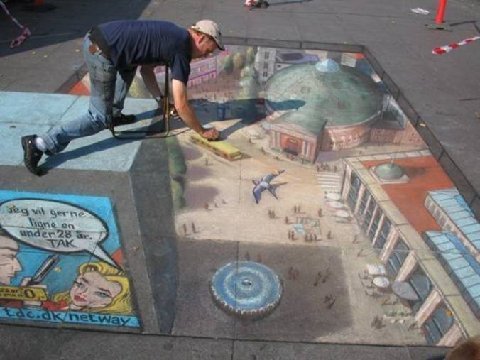 Drawn On A Flat Sidewalk With Colored Chalk.
Where Was The Proofreader That Day?
A Redneck Bass Boat (Editor's Note; On second thought that may not be such
More Proof We Masons Rule The World
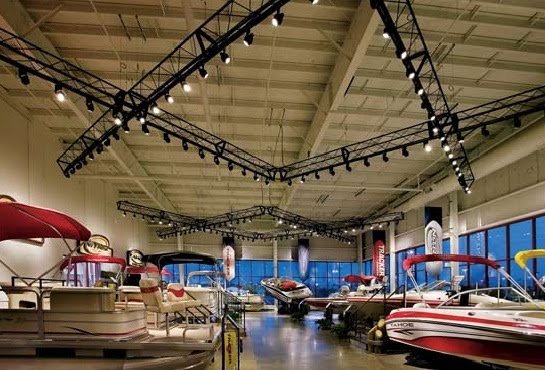 |
|
All material in this site may be used to educate everyone, Freemasons and non-Freemasons alike about Freemasonry and for the promotion of Freemasonry. A very sincere effort is made to avoid using any copyrighted material, without permission or giving credit to the author and source, in the creation of this web site. If you discover something that is yours, without giving you due credit, please let me know and due credit will be given or the item will be replaced.
|
|
|

